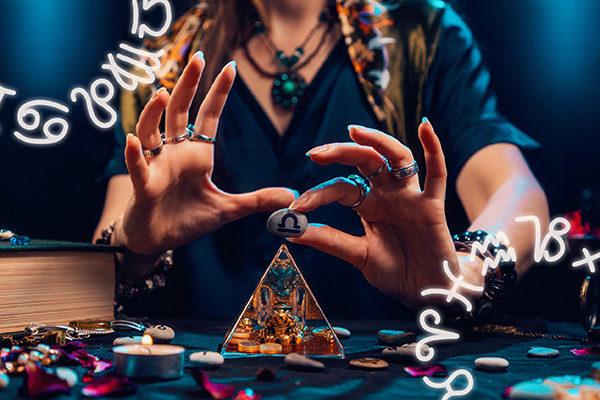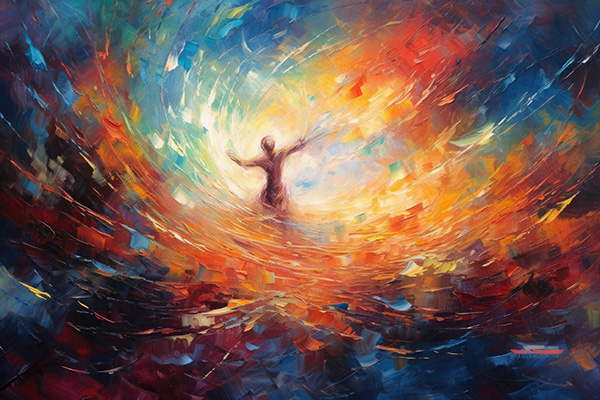soul purpose
The Power Of Precision In Psychic Reading
 As a professional rune reader, I’ve come to appreciate the profound importance of preparation and precision in any psychic reading. The core element is the clarity of the question asked, which is paramount in any reading.
As a professional rune reader, I’ve come to appreciate the profound importance of preparation and precision in any psychic reading. The core element is the clarity of the question asked, which is paramount in any reading.
I find that clients who approach a reading with clear questions and sincere intentions usually receive the most transformative insights and accurate answers.
In the runic tradition, the clarity of the question has always been central to the practice. From ancient times to the present, seekers have always understood that the runes respond most powerfully to direct inquiries. I’ve seen firsthand how precise questions can serve as a beacon, directing the energy of the reading to the heart of the matter.
Various runic traditions, including Norse, Germanic, and Anglo-Saxon, have always emphasized the importance of asking clear and specific questions.
Ancient teachings also suggest that when consulting the runes, one should approach the practice with honor and respect. Questions should be asked with a sincere and genuine intent, recognizing the sacred nature of the runic symbols and the guidance they provide.
Let Go And Embrace The Cosmic Dance!
 Life is a mystical dance where the things we know and the mysteries we’ve yet to discover dance an intricate tango. And the universe invites us to let go and groove to the enchanting rhythm of this dance.
Life is a mystical dance where the things we know and the mysteries we’ve yet to discover dance an intricate tango. And the universe invites us to let go and groove to the enchanting rhythm of this dance.
But here’s the thing – we often get tangled up in our own threads of attachment and resistance that interfere with our divine energy flow. In order to dance our best dance, we must learn to let go of what does not serve our flow. Letting go, releasing, surrendering is like untangling a messy knot that allows our mind, body and soul to boogie more freely!
In this dance of life, a psychic, medium or energy healer is like a cosmic DJ who can help you drop the limitations of the ego to participate more fully in the cosmic symphony. We help people transform their baggage of attachment into the gold of spiritual joy and fulfillment.
Whether it’s material possessions, toxic thoughts and feelings, dysfunctional relationships, or limiting fears and beliefs, attachments are like veils covering the radiant essence of your soul. You are potentially a spiritual alchemist who can dissolve these veils with the elixir of surrender. When we release our ego grip, we reveal the hidden sparkle of our soul in the divine light.
Spiritual Relationships Support Our Soul Growth
 Spiritual relationships shape our life journey and nurture our soul growth in many significant ways. Whether it’s the mysterious bond of a soul mate, the intricate web of soul contracts we have with our family and friends, or simply the spiritual bond we feel with our pet, these connections transcend the mundane and resonate deeply with us on a soul level.
Spiritual relationships shape our life journey and nurture our soul growth in many significant ways. Whether it’s the mysterious bond of a soul mate, the intricate web of soul contracts we have with our family and friends, or simply the spiritual bond we feel with our pet, these connections transcend the mundane and resonate deeply with us on a soul level.
There are several types of spiritual relationships that are intricately woven into the tapestry of our lives, influencing our karmic choices, life experiences, and personal and spiritual growth. By understanding the dynamics of these special relationship connections, we can embrace their transformative power and navigate our spiritual path with greater clarity and purpose.
So, what exactly is a spiritual relationship? These relationships are different with different people in your life, and each has a different impact on you. They stand out for different reasons and usually leave a significant mark on your being, whether it’s a lover, partner, friend, co-worker, relative, or even a complete stranger.
This type of relationship can be a game changer, creating a special and unbreakable bond between two people who are on the same spiritual level and see things in a similar way. Mental doors and emotional pathways open, and remarkable things happen with these magical connections.
My Spiritual Journey To Artistic Triumph
 In the realm of creativity, the road to success often winds through valleys of doubt, self-questioning, and external skepticism. My artistic journey was no exception, marked by over 12 years of struggling with self-doubt about my talent.
In the realm of creativity, the road to success often winds through valleys of doubt, self-questioning, and external skepticism. My artistic journey was no exception, marked by over 12 years of struggling with self-doubt about my talent.
Fortunately, the turning point in my career came from a profound spiritual transformation that not only dissolved my insecurities, but catapulted me into the radiant light of artistic recognition.
The Valley Of Doubt
Early in my artistic career, the art industrial art complex echoed with the voices of snooty gallery curators who, with dismissive gestures, suggested that my work lacked that elusive quality called “talent.
My artistic endeavors became a constant battle against self-doubt, a relentless inner saboteur that continually cast shadows over my creative efforts. Meanwhile, the rejection letters piled up, creating a formidable barrier between my aspirations and the artistic recognition I craved.
In the depths of artistic despair, I found solace and inspiration in the words of the iconic Audrey Hepburn: “I was born with an enormous need for affection and a terrible need to give it.” This resonated with my journey, where the rejection I faced became the catalyst for a personal reckoning. I decided to turn the tables on those who had once rejected my work. Every “no” I received was transformed into my own resounding “no” to doubt and limitation. Continue reading
The Truth About Being “Too Busy”
 It is good to be busy. But some people are always too busy. Too busy to do the things that really matter. Too busy to go where we really want to go. Too busy to make a difference. Too busy to love. Too busy.
It is good to be busy. But some people are always too busy. Too busy to do the things that really matter. Too busy to go where we really want to go. Too busy to make a difference. Too busy to love. Too busy.
I admit that I am one of those people who, when asked how I am doing, often gives the standard one-word answer: “Busy.” Some people who like their jobs and choose to work a lot are called workaholics. I have been called a workaholic by friends and family. My response is always that I am grateful to still be able to do what I love.
Yes, some of us like to be busy. We like to be doing something all the time. For me, being busy gives me a sense of self-worth and security. When a task is completed, it gives me a sense of accomplishment. Being busy is also a way to thrive. Some people do their best work when they are very busy and under pressure. We are indeed blessed when we have a job that we truly love to do. But that does not mean we never need a day off without feeling guilty?
The pandemic has been a challenge for us busy people. How do you stay busy when you cannot leave the house? One thing it did for me was give me “permission” to take an online art class without feeling guilty. Also, friends and family have given me more puzzles than one could ever have in a lifetime. In the past, I would have felt guilty about doing these things for pleasure instead of work.
Unstuck Your Life With A New Spiritual Practice
 One of the most transformative things we can do in life is to step out of our comfort zones and infuse our lives with new vitality. As creatures of habit, we tend to get stuck in life with repetitive routines and recurring patterns that drain our energy and stifle our personal and spiritual growth.
One of the most transformative things we can do in life is to step out of our comfort zones and infuse our lives with new vitality. As creatures of habit, we tend to get stuck in life with repetitive routines and recurring patterns that drain our energy and stifle our personal and spiritual growth.
When conventional methods fall short, exploring spiritual or esoteric practices can breathe fresh air into our lives and help us break free from the shackles of monotony.
Feeling stagnant, experiencing a lack of fulfillment, or longing for personal growth are all signs that it’s time to break free from a comfort zone, a soulless daily routine, or a recurring toxic pattern that no longer serves our highest good. These indicators often signal the need for change to invigorate or even reinvent our lives.
By adopting a new spiritual practice and delving into realms beyond the ordinary, we embark on a new journey of self-discovery and soul expansion that unlocks our hidden potential and transforms our destiny. Exploring esoteric and occult traditions offers alternative perspectives and transformative experiences that can expand our consciousness and provide profound insights. It can uncover hidden knowledge and help us tap into higher realms of consciousness that enrich our lives.
